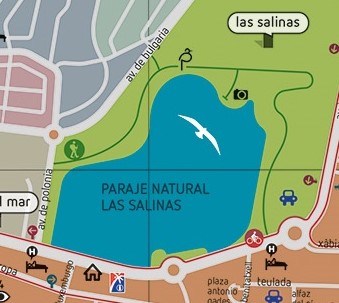Calpe’s salt flats occupy a depression filled with Quaternary alluvial deposits. The position of the Peñón de Ifach is an important factor in the formation of this interesting humid area. It is a lagoon of tombolic origin produced by the development of a double sandbar.
The excavated pools of the "Baños de la Reina" fish farm are located on the sandbar in the area of Calpe’s bay.
Salt was a necessity for food preservation, which Calpe used to market their catch. This shows that the exploitation of Calpe’s salt flats began long ago. During the Roman era, its salt production was combined with the fish farm, achieving its greatest splendor in the 2nd century AD. The salt flats acquired great importance throughout history, eventually supplying over 40 municipalities. Their decline began to be evident at the end of the 18th century, when they became the focus of infections that caused fevers among the population. Later there were various attempts to make them operational again, including by Vicente Buigues, known as "Ti Marguí", who started the modern exploitation of the salt flats, which ended in the late 1980s. In 1993 they were declared a maritime-terrestrial zone.
In the salt flats you can see various birds, one of the most striking being the flamingo, as well as vegetation unique to this peculiar ecosystem.
There is a trail adapted for bird watching, easily accessible and semi-circular



